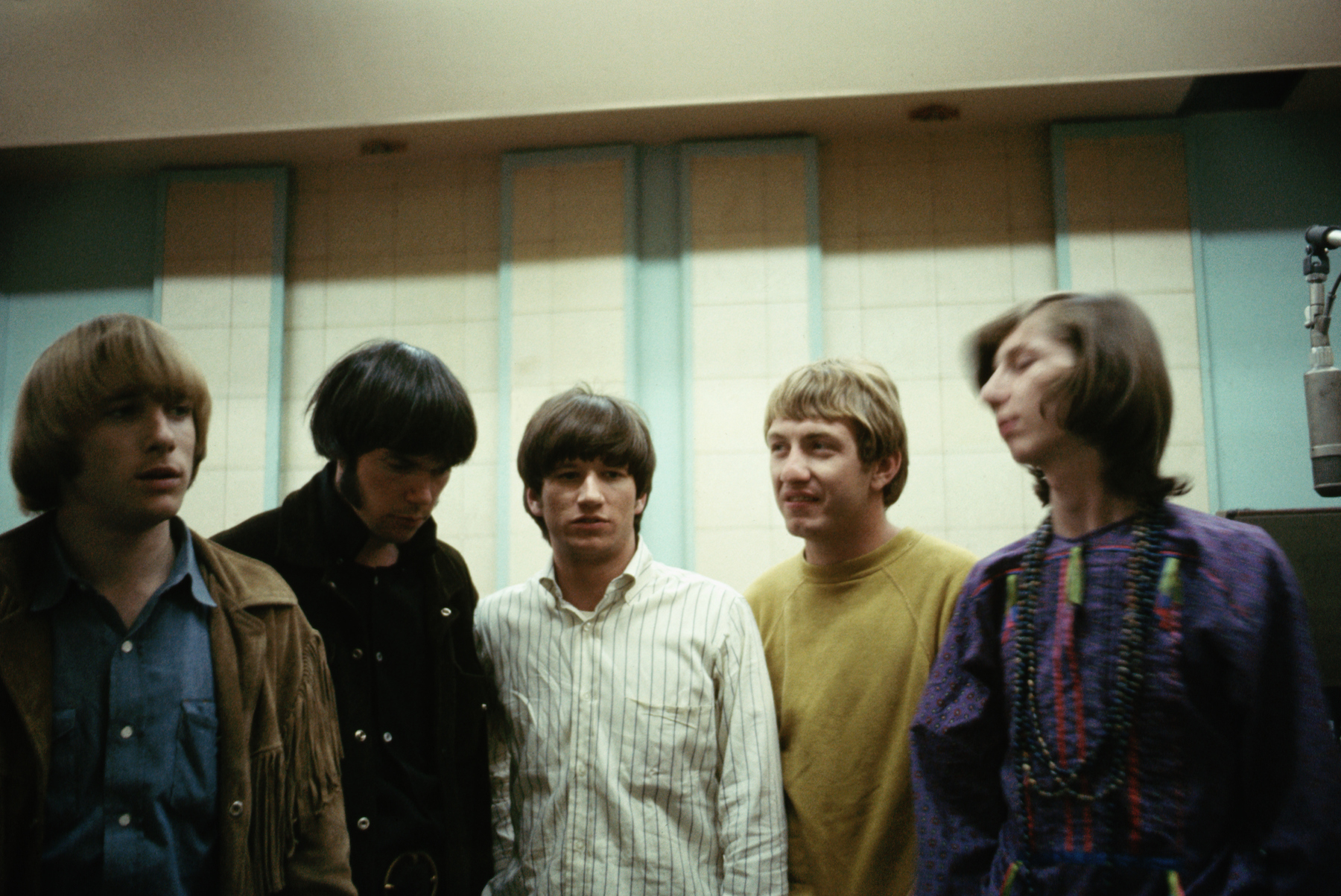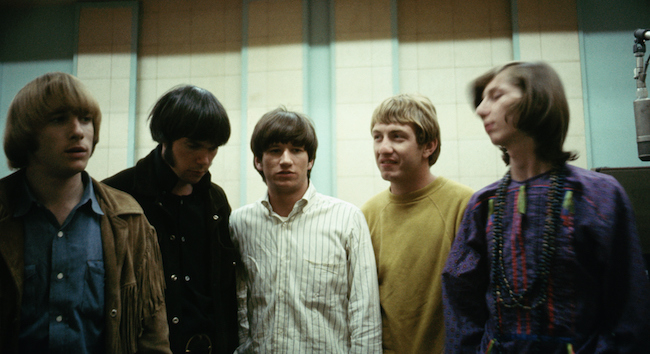
For a band that lasted less than three years, Buffalo Springfield had an absurdly outsized impact. Their core membership, of course, included two guys who need no introduction—Neil Young and Stephen Stills—as well as a third guitarist and vocalist, Richie Furay, who would go on to do great things with Poco, the Souther-Hillman-Furay Band and on his own. But beyond that, the Springfield were vital in formulating the folk-rock, country-rock and psychedelic genres that would flourish long after the Los Angeles quintet—which also included bassist Bruce Palmer and drummer Dewey Martin in its original incarnation—had gone their separate ways.
They came together in 1966, when Canadians Young and Palmer, who’d come to L.A. to try their luck, ran into Stills, a musician they’d met previously in Toronto. The band quickly found its footing and after debuting on April 11, 1966, at the Troubadour in Hollywood, they became the house band at the popular Whisky a Go Go on the Sunset Strip, building a reputation as one of the most exciting and innovative new groups on the West Coast scene.
The band’s management struck a deal with Ahmet Ertegun at Atlantic Records and Buffalo Springfield released their self-titled debut album Dec. 5 on the Atco subsidiary. It moved slowly sales-wise so in March 1967, the label decided to shuffle the track listing around and re-release the album with an added track, “For What It’s Worth,” a song that Stills had written chronicling recent clashes between police and young people on the Strip. The song, released as a single, had taken off immediately and begun climbing the charts—it would peak at #7—and the label felt that the album had a better shot with “For What It’s Worth” included (“Baby Don’t Scold me” was removed in the second pressing). It didn’t help much—the album peaked at #80—but Buffalo Springfield was now a national name.
By the time the band was ready to release its followup, Buffalo Springfield Again, in Nov. 1967, it was already in disarray. Bassist Palmer had been deported to Canada and although he re-entered the United States illegally to work with the band, his absence was a major factor in the lengthy gap between the first and second albums. On top of that, Young had grown disillusioned and had left and re-joined the band a number of times, missing out on performing with them at the June Monterey Pop Festival (his temporary replacement, David Crosby, would soon enough have more to do with both Stills and Young).
Related: When the Springfield met TV’s “Mannix”
Buffalo Springfield Again was just about as perfect an album as any released that year, containing such classics as Young’s “Mr. Soul” and “Broken Arrow,” Stills’ “Bluebird” and Furay’s “A Child’s Claim to Fame.” It did better on the charts, reaching #44, but by the end of the year the writing was on the wall for the band. By the time the contractual-obligation album Last Time Around—which also included several classics, among them “I Am a Child,” “Kind Woman,” “On the Way Home” and “Pretty Girl Why”—was released on July 30, 1968, peaking eventually at #42, Buffalo Springfield had already packed it in.
Related: Our Album Rewind of Buffalo Springfield Again
Their final gig took place on May 5, 1968, topping a bill at the Long Beach Sports Arena also featuring Country Joe and the Fish and Canned Heat. On May 5, 2023, the 55th anniversary of the performance, Stephen Stills shared a brief audio clip of “Bluebird,” the final song from the concert.
The photo and the audio are from Buffalo Springfield’s final performance. The venue was the Long Beach Arena in Long Beach, California. The date was May 5, 1968. The final song was Bluebird. pic.twitter.com/zn39P2XCnU
— Stephen Stills (@Stephen__Stills) May 5, 2023
Listen to a very rough tape of the performance
Buffalo Springfield was inducted into the Rock and Roll Hall of Fame in 1997.
Watch a video about the band’s final gig
Buffalo Springfield’s recordings are available in the U.S. here and in the U.K. here.


5 Comments
Great historical perspective – thanks. However, there’s a minor error in the caption of the first photo shown. The bassist on the left is Jim Messina, not Bruce Palmer.
Thanks much. We’ve made the fix.
I saw what was the supposed last concert of the buffalo Springfield At the valley music theatre. In woodland hills Where I saw them several times. Stephen stills Mother lived up the street from me. Stephen lived there well he was dating Judy Collins. Stephen often stopped by my house to say hello. Well he drove a maroon El Camino .
I’ve never heard so much guitar tuning in a concert setting.
I was lucky to see the Buffalo Springfield before their breakup on February 10, 1968 in Fresno Ca.